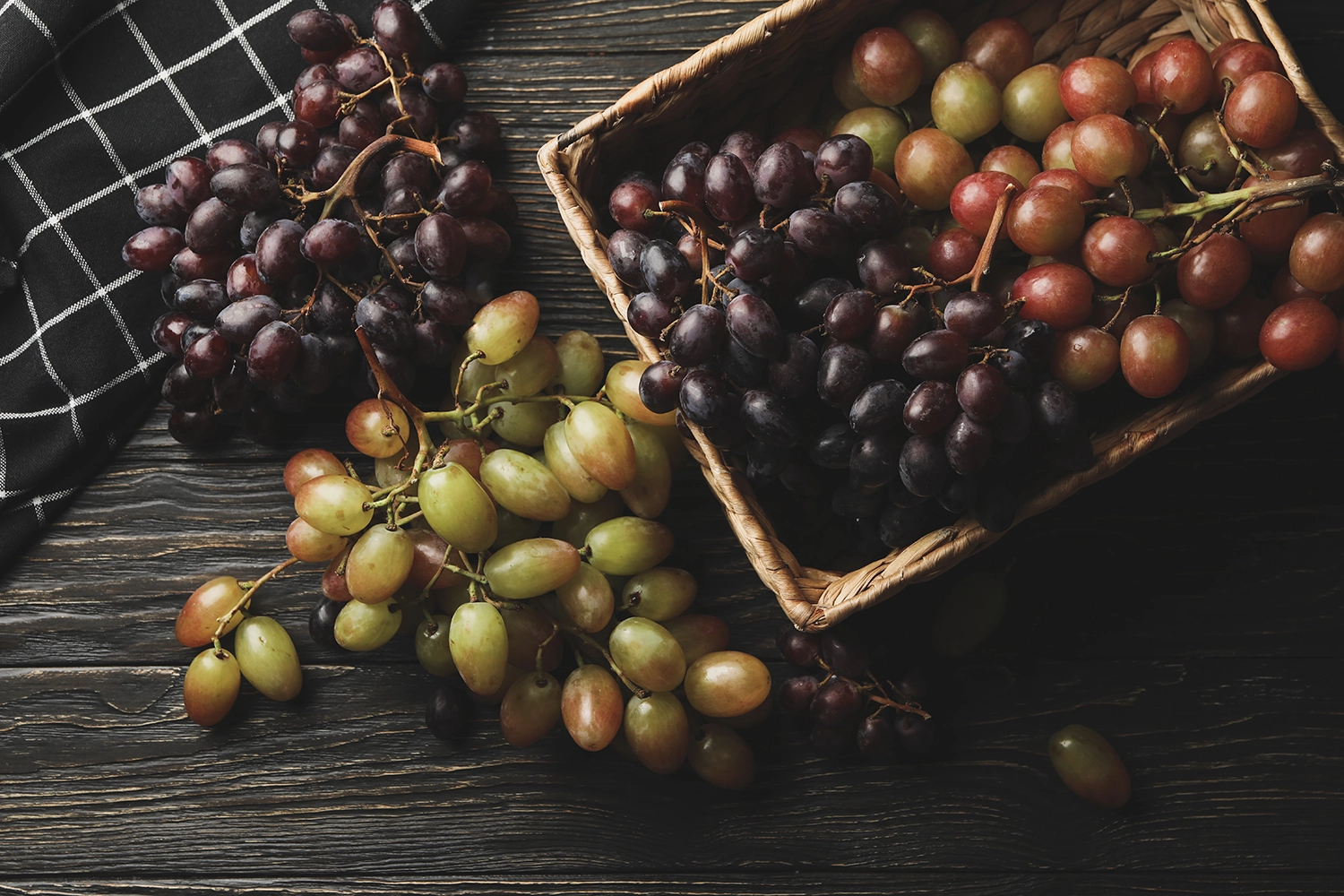Blog
The Craft of Moldovan Grape Varieties

Moldova is renowned for its rich winemaking tradition, but beyond the symbolism of Moldovan wines, there is a complex process that involves skill, labor, and dedication. Each grape variety is carefully cultivated and maintained, with Moldovan winemakers following strict guidelines to achieve the finest aromas and preserve the quality of the grapes that define this region. Whether it is Fetească Albă, Fetească Regală, Fetească Neagră, Rară Neagră, Plăvaie, or Viorica, each variety has its own unique characteristics that give the wine its personality.
Feteasca Albă – delicacy from Moldovan lands
Fetească Albă, an ancient Moldovan variety, is known for its sensitivity to environmental conditions. The grapes are grown in well-drained soils with moderate sun exposure, which helps achieve a perfect balance between sugars and acidity. Fetească Albă vineyards require careful attention, as the grapes can be vulnerable to diseases such as mildew and powdery mildew. For this reason, Moldovan winemakers apply special treatments throughout the growing season to maintain the health of the vines and obtain the highest quality fruit. The final result is a wine with fine floral aromas and subtle acidity, reflecting the complexity of the Moldovan terroir.
Feteasca Regală – nobility requires care
The Fetească Regală variety is cultivated on medium-altitude lands, where the soils are fertile and well-ventilated, allowing for healthy vine development. These grapes stand out for their resilience, but to achieve the best results, the vines are regularly pruned to ensure optimal ventilation and prevent excessive humidity, which could affect fruit quality. Fetească Regală requires precise irrigation management and manual harvesting to preserve the integrity of the grape berries. The resulting wine is vibrant, with aromas of green fruits and balanced acidity.
Feteasca Neagră – the depth of the process
Feteasca Neagră is an ancient and highly valued red grape variety in Moldova, recognized for its robust character. This variety prefers clay-rich, well-drained soils, and the vines are planted on sunlit slopes, ensuring a slow and steady ripening of the grapes. Cultivating Feteasca Neagră requires careful attention throughout the growing season, as this variety is prone to high yields that can affect the wine's quality. To manage this, winemakers practice cluster thinning, ensuring that each vine produces only the necessary amount of high-quality grapes. After harvesting, the grapes undergo a carefully monitored maturation process, allowing the development of complex dark fruit aromas, strong tannins, and a velvety structure.
Rară Neagră – balanced care
Rară Neagră grapes are grown on gently sloping terrains, where sun exposure is even and soil drainage is excellent. Although less common, this variety is known for its natural balance but requires meticulous care, as its grapes are prone to overripening if not harvested on time. Moldovan winemakers use selective harvesting and strict fermentation control to extract subtle red fruit aromas while maintaining a balance between acidity and tannins. Rară Neagră is a wine that impresses with its refinement and natural elegance, becoming a favorite among local winemakers.
Plăvaie – a rare and precious variet
Plăvaie is an indigenous white grape variety that requires well-drained soil and moderate growing conditions, being sensitive to drought and extreme temperatures. Cultivated in the central and southern vineyards of Moldova, this variety is carefully managed in terms of irrigation and sun exposure, both essential for developing its distinctive aromas. Plăvaie vines are pruned periodically to promote good air circulation, preventing disease. The grapes are hand-harvested and transformed into a light white wine with notes of green apples and wildflowers, perfect for warm summer days.
Viorica – a special wine with a unique aroma
The Viorica variety is a recent addition to the Moldovan viticultural landscape but has quickly gained popularity due to its unique aromas and resistance to disease. Viorica is cultivated on well-drained, sunlit lands, and this variety stands out because it requires fewer phytosanitary treatments, being resistant to most vine diseases. The grapes are harvested when they reach optimal ripeness, and the resulting wine has intense aromas of vine flowers and tropical fruits, making it a distinctive white wine in Moldova.
Moldova: mastery in vine cultivation
Alongside these indigenous varieties, Moldova also cultivates international varieties such as Cabernet Sauvignon, Merlot, and Chardonnay, each with its well-established place in local vineyards. However, Moldovan winemakers focus their efforts on native varieties, investing in modern cultivation and winemaking techniques to preserve tradition and offer the world exceptional-quality wines. Each vine is carefully tended, each grape is meticulously harvested, and each bottle of wine tells a story of craftsmanship and respect for the land that gave it life.
